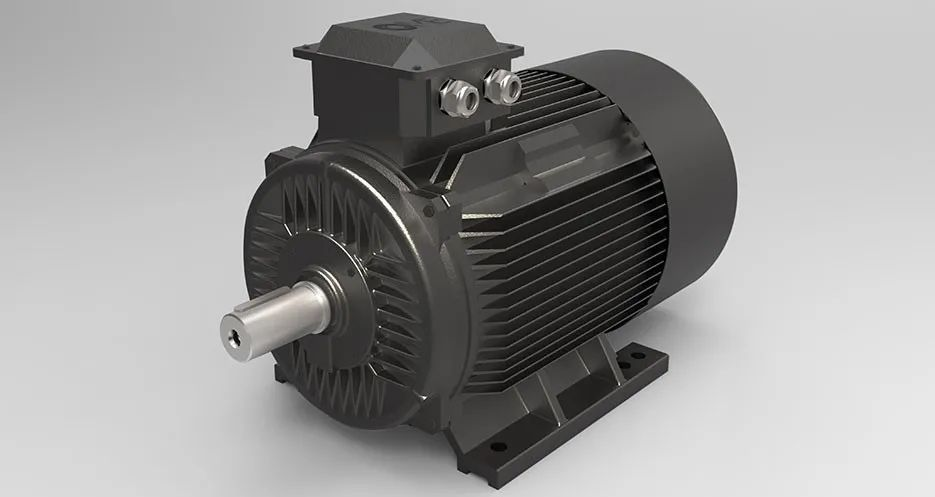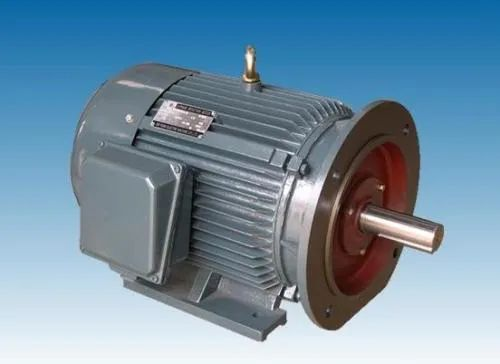Brushless DC motor: Control method to suppress commutation torque fluctuations
When the brushless DC motor is working, it will cause commutation torque fluctuations. How to suppress the torque fluctuations? The following editor will introduce several methods to suppress the torque fluctuations caused by current commutation.

1. Current feedback adjustment method
As mentioned before, changes in the non-commutated phase current cause commutation torque fluctuations. The current feedback adjustment method is to keep the commutation phase current constant, thereby making the commutation torque fluctuations zero. Generally speaking, current feedback control can be divided into two forms, namely DC side current feedback control and AC side current feedback control. The current feedback signal of the DC side current feedback control is taken out from the DC bus and mainly controls the current amplitude. Since the DC side current feedback control is based on the current signal flowing through the DC power supply, only one current sensor is required. The current feedback signal of the AC side current feedback control is taken out from the AC side. At this time, the phase current to be controlled is determined according to the position of the rotor, so that it follows the set current value command. During the commutation process, when the non-commutated phase current does not reach the set value, the PWM control does not take effect; when the non-commutated phase current exceeds the set value, the PWM control starts to take effect, causing the current value to decrease and realizing the non-commutated phase current. The commutation phase current is adjusted to remain stable.
In current feedback closed-loop control, hysteresis current control method is often used. The basic principle is that the current loop uses a loop current regulator. By comparing the set current and the actual current, the amplitude of the actual current and the width of the hysteresis loop determine the output of the hysteresis current regulator control signal. When the actual current is less than the lower limit of the hysteresis width, the switching device is turned on; as the current rises and reaches the upper limit of the hysteresis width, the switching device is turned off, causing the current to decrease. The actual current can be the phase current or the bus current of the inverter. The characteristics of the hysteresis current method are: simple application, good rapidity, and current limiting capability. The hysteresis current control method can be divided into three situations: controlled by rising phase current, controlled by non-commutated phase current and controlled independently by three-phase phase current. Experiments comparing the effects of these three methods on suppressing commutation torque fluctuations show that the commutation torque characteristics of the latter two cases are the same. It has a good suppression effect on commutation torque fluctuations and is suitable for low speeds. During the commutation period, the hysteresis control method is used to directly control the non-commutated phase current to reduce the electromagnetic torque movement during the commutation period. According to the fact that the electromagnetic torque is proportional to the non-commutated phase current during commutation, and the non-commutated phase current reference value is a constant, after determining the non-commutated phase current to be controlled and the corresponding reference current, the hysteresis comparator is used to control Its phase current ensures that the non-commutated phase current tracks its reference value during commutation, which can effectively reduce the fluctuation of electromagnetic torque during commutation. The control method mentioned in the article has small torque fluctuations and a simple circuit that is easy to implement. Compared with the traditional three-phase hysteresis control, it has the characteristics of small power tube loss and high efficiency, and is very suitable for high-performance servo drive systems.
Another method based on controlling the commutation current. This method takes the commutation current as the research object, and maintains the stability of the current during the commutation period by making the decline rate of the off-phase current equal to the rise rate of the on-phase current, thereby reducing the torque ripple. That is, during the commutation period, by applying appropriate compensation voltage to the two-phase winding surfaces of A and C, the C-phase current is kept constant to achieve the purpose of suppressing torque fluctuations. Experimental results show that this method achieves good results in the application of subway screen doors, reducing current fluctuations by 8% and torque fluctuations by 10%.
2. Overlap commutation method
Although the current feedback method and hysteresis current method solve the torque fluctuation problem of low-speed commutation, the effect is usually not ideal at high speed. A more mature method to suppress commutation torque fluctuations in the high-speed section is the overlap commutation method. The basic principle is: the power switching devices that should be turned off immediately during commutation are not turned off immediately, but extended for a time interval; the switching devices that should not be turned on are turned on in advance. In the traditional overlap commutation method, the overlap time needs to be determined in advance, but it is difficult to select an appropriate overlap time. If it is too large, it will cause over-compensation, and if it is too small, it will cause under-compensation. For this reason, based on the conventional overlap commutation method, fixed-frequency sampling current adjustment technology is introduced. This technology uses PWM control to suppress commutation torque fluctuations during the overlap period, so that the overlap time is automatically adjusted by the current adjustment process, thus avoiding the problem of difficulty in determining the size of the overlap interval. However, this method must ensure high enough current sampling frequency and switching frequency to be effective. In addition, although this method is effective in suppressing commutation torque fluctuations at high speed, it requires offline solution of the switching state and the algorithm is complex, which has certain limitations in practical applications.
3. PWM chopping method
The hysteresis current method can better solve the problem of commutation torque fluctuation at low speed, but the effect is not ideal at high speed. The PWM new wave method is similar to the AC side current feedback control method, that is, the switching device performs chopping at a certain frequency before turning off and after turning on, and controls the terminal voltage of the winding during the commutation process, causing each commutation current to rise and fall. The speed is equal to compensate for changes in the total current amplitude and suppress commutation torque fluctuations. Compared with the overlapping commutation method, this method has smaller torque ripple and is suitable for occasions with higher accuracy requirements.

4. Current predictive control method
The commutation torque fluctuations of brushless DC motors are different in the high-speed area and low-speed area, and most of them are considered separately when studying suppression methods. However, in practical applications, affected by factors such as motor speed and power supply voltage, it is difficult to divide the commutation torque fluctuation into high-speed areas and low-speed areas and take different suppression measures as theoretically analyzed. Therefore, it is necessary to find a method that can effectively suppress commutation torque fluctuations in the full speed range. The current predictive control method meets this requirement. It takes the commutation current as the research object and derives the commutation current prediction control rules when the motor is running in the high-speed zone and the low-speed zone, ensuring that the current drop rate of the off phase and the current rise rate of the open phase during commutation are equal, thereby making The phase current of the non-commutated phase winding remains constant during the commutation period, reducing the commutation torque fluctuation. At the same time, this method is combined with the method of eliminating the negative current of the DC bus to further suppress the commutation torque fluctuation. This commutation current prediction control method has a simple algorithm, easy implementation, strong adaptability and obvious effect. It can be well used in open-loop control, traditional current PI control, or in control systems using modern intelligent control algorithms. Embedded into the commutation period, it effectively suppresses commutation torque fluctuations.
5. Torque direct control method
The direct torque control method adopts a two-phase conduction method without coordinate transformation, and takes into account the limited power supply capacity of the DC power supply during winding commutation. During the commutation period, when the duty cycle of the switching tube corresponding to the rising phase winding is controlled to reach 100%, if there is still torque fluctuation, the switching tube corresponding to the falling phase winding is turned on and chopper control is performed to reduce the falling phase current. The decreasing rate, and the duty cycle of the switching tube can be calculated. Simulation and experiments show that this method can effectively suppress the torque fluctuation of non-ideal back electromotive force brushless DC motor. This method is only suitable for occasions where the speed change is not significant.
6. Torque closed-loop control method
In response to torque fluctuations, torque closed-loop control methods have been proposed in recent years. It takes the instantaneous torque of the motor as the control object, and realizes direct control of the instantaneous torque through the torque regulator according to the actual torque feedback signal, thereby reducing torque fluctuations. If the feedback signal is given through the torque sensor, the system response is slow, and most of them can only work in a static or low-speed state. If the torque observer is constructed by using the structural parameters of the motor and some easily measured state variables, the operation will be quite complicated, and parameter changes will also bring certain errors. These issues have yet to be fully resolved.



























 XINDA
XINDA